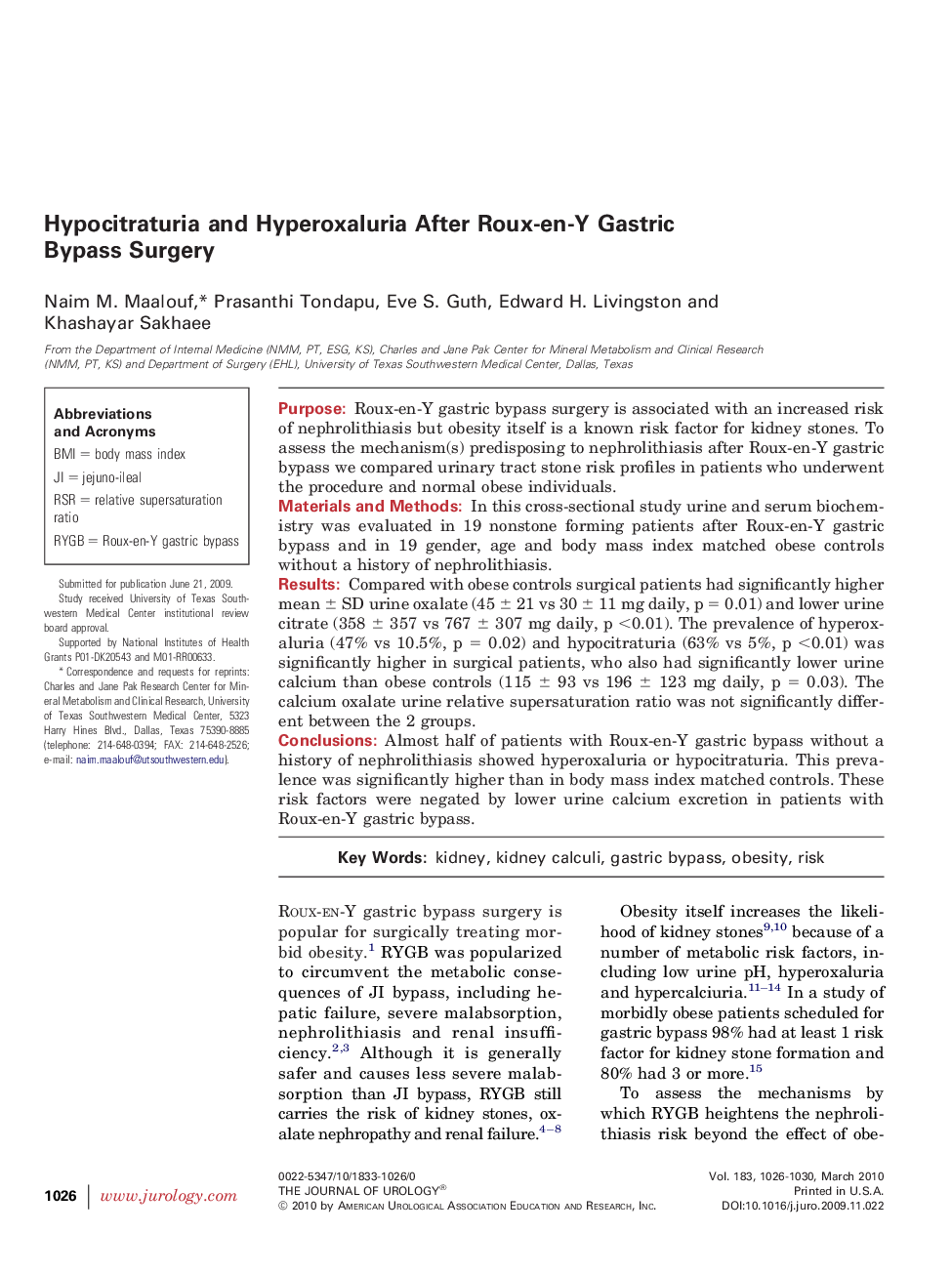| Article ID | Journal | Published Year | Pages | File Type |
|---|---|---|---|---|
| 3874801 | The Journal of Urology | 2010 | 5 Pages |
PurposeRoux-en-Y gastric bypass surgery is associated with an increased risk of nephrolithiasis but obesity itself is a known risk factor for kidney stones. To assess the mechanism(s) predisposing to nephrolithiasis after Roux-en-Y gastric bypass we compared urinary tract stone risk profiles in patients who underwent the procedure and normal obese individuals.Materials and MethodsIn this cross-sectional study urine and serum biochemistry was evaluated in 19 nonstone forming patients after Roux-en-Y gastric bypass and in 19 gender, age and body mass index matched obese controls without a history of nephrolithiasis.ResultsCompared with obese controls surgical patients had significantly higher mean ± SD urine oxalate (45 ± 21 vs 30 ± 11 mg daily, p = 0.01) and lower urine citrate (358 ± 357 vs 767 ± 307 mg daily, p <0.01). The prevalence of hyperoxaluria (47% vs 10.5%, p = 0.02) and hypocitraturia (63% vs 5%, p <0.01) was significantly higher in surgical patients, who also had significantly lower urine calcium than obese controls (115 ± 93 vs 196 ± 123 mg daily, p = 0.03). The calcium oxalate urine relative supersaturation ratio was not significantly different between the 2 groups.ConclusionsAlmost half of patients with Roux-en-Y gastric bypass without a history of nephrolithiasis showed hyperoxaluria or hypocitraturia. This prevalence was significantly higher than in body mass index matched controls. These risk factors were negated by lower urine calcium excretion in patients with Roux-en-Y gastric bypass.
